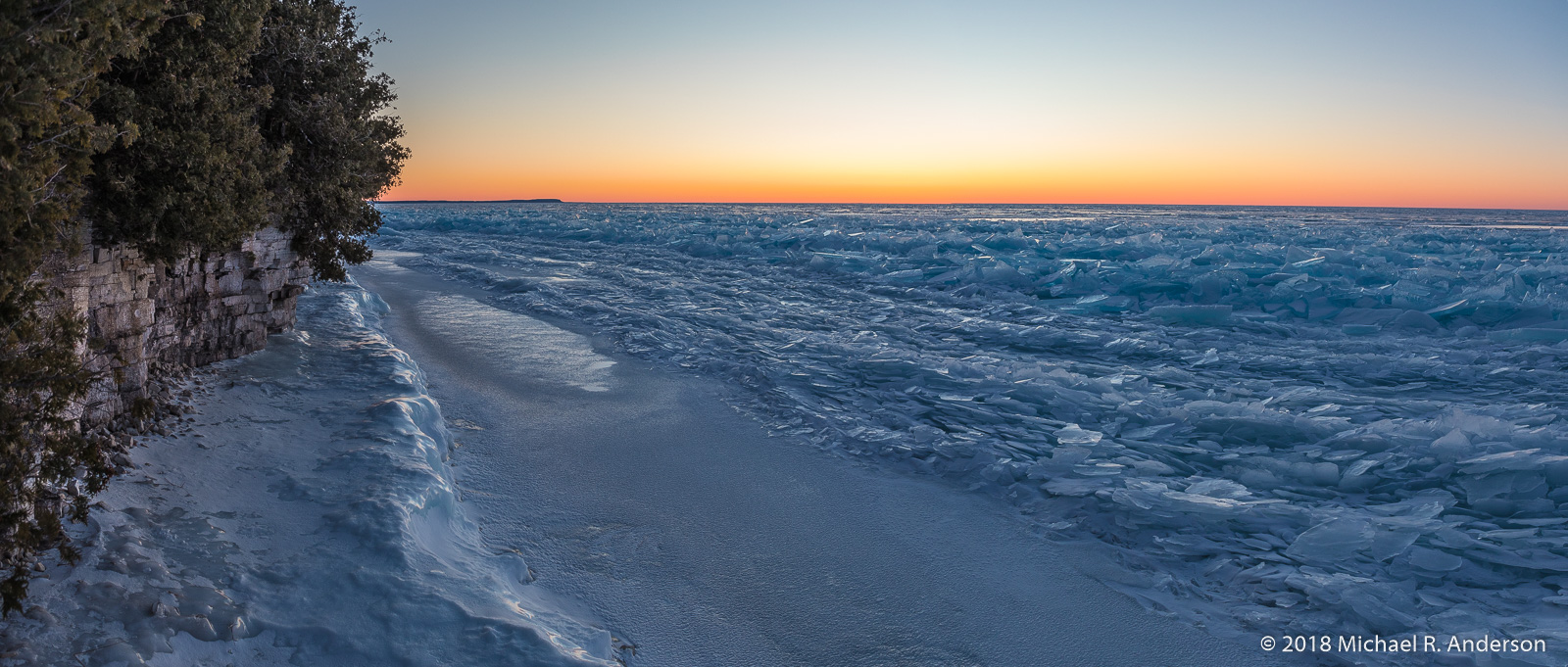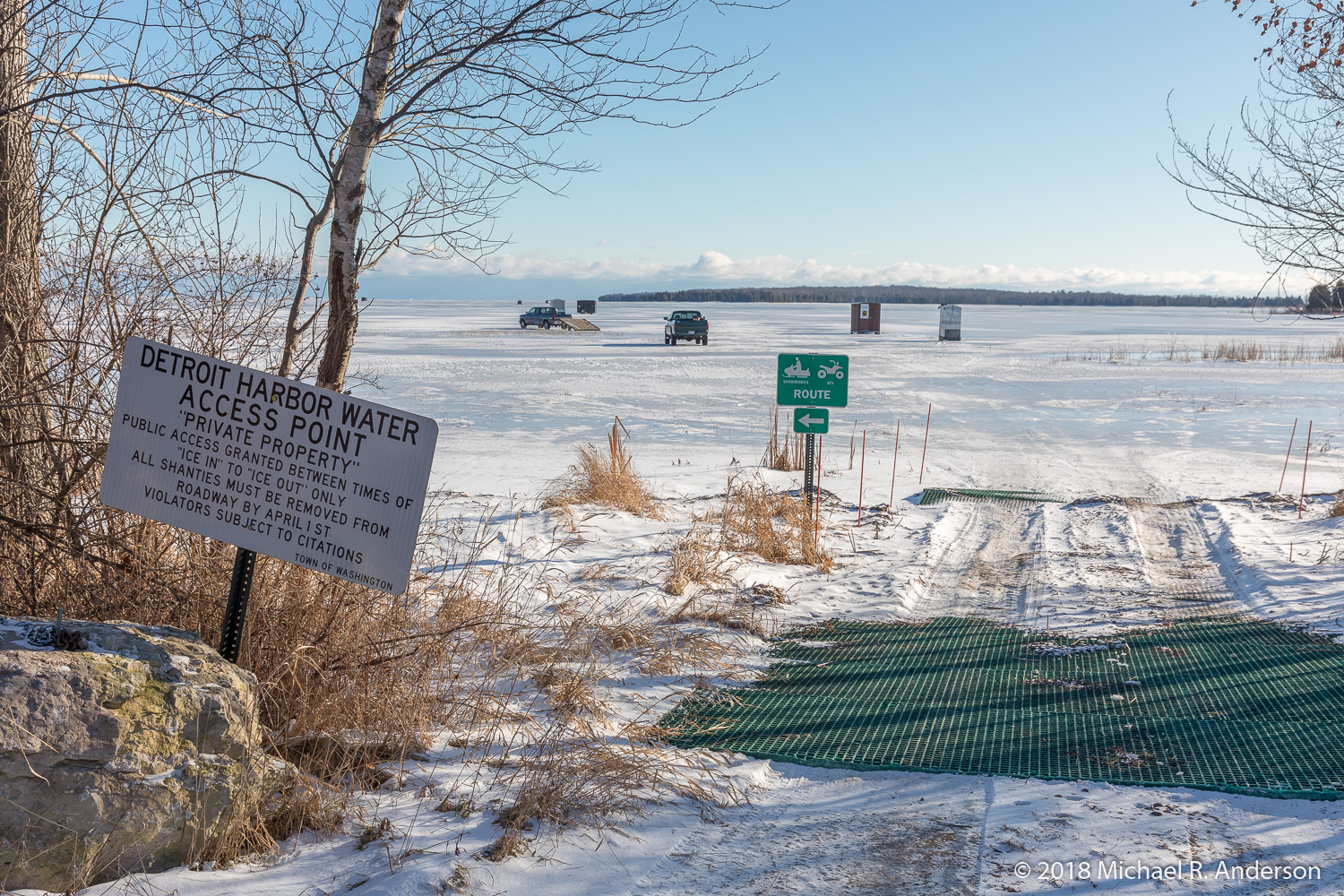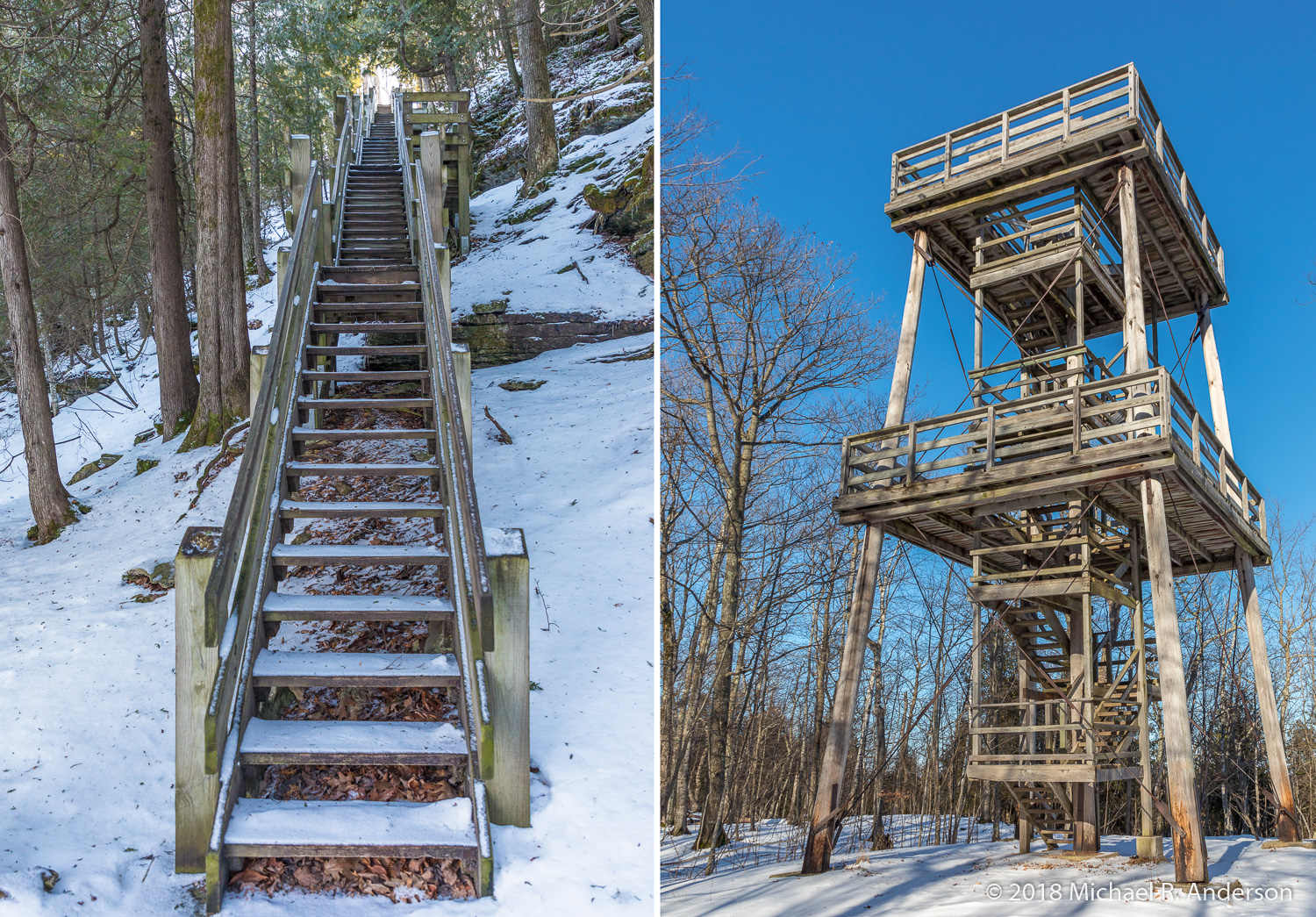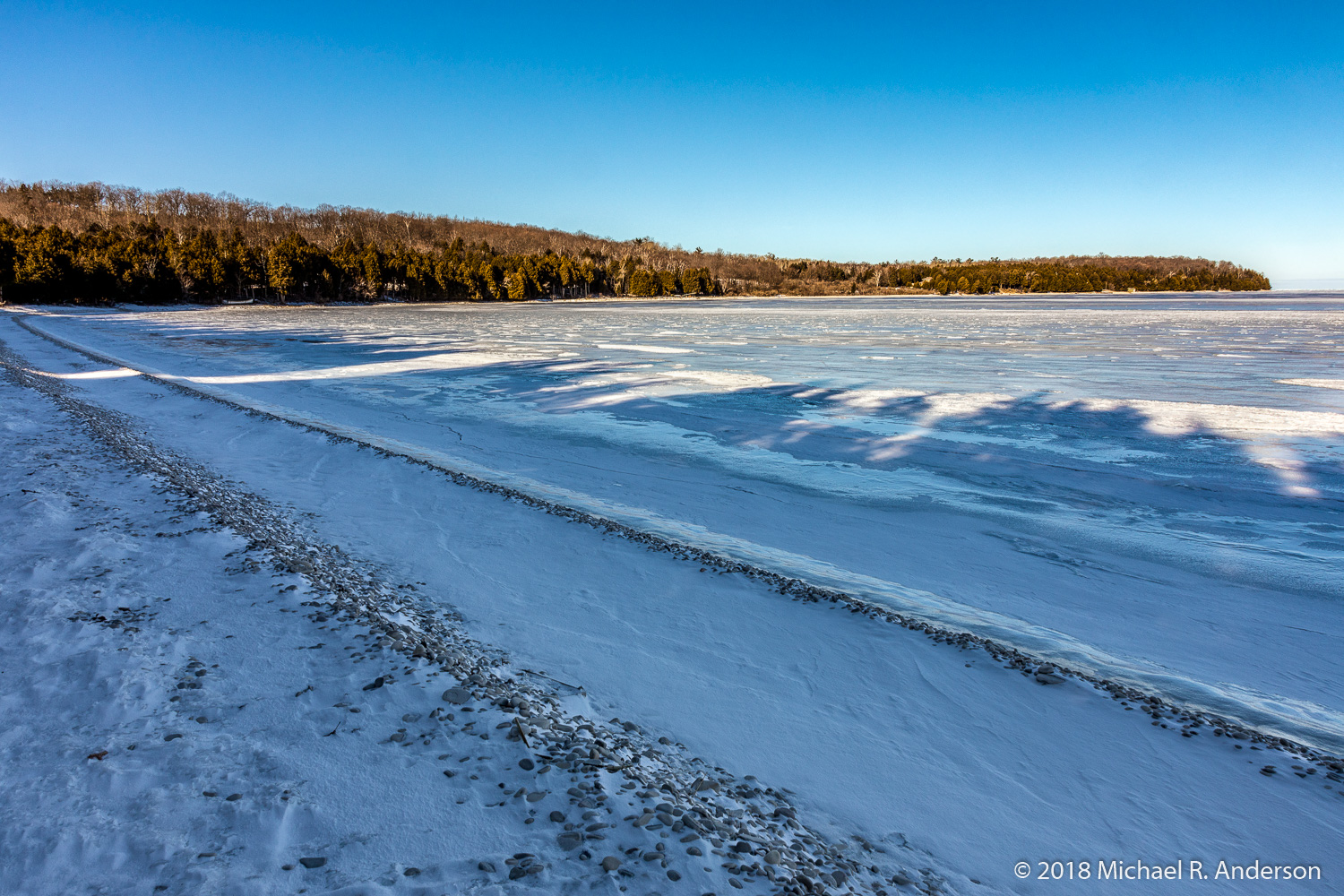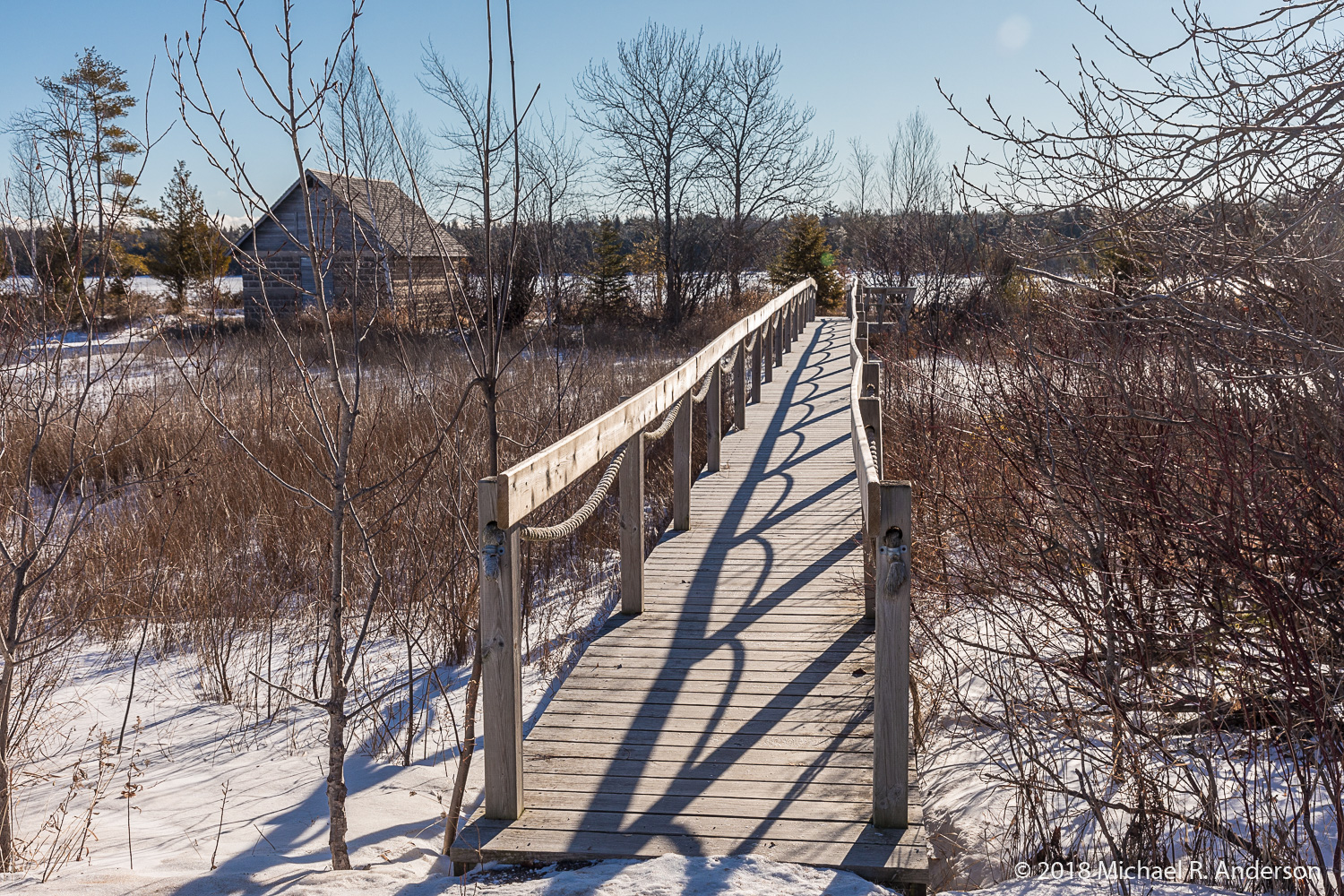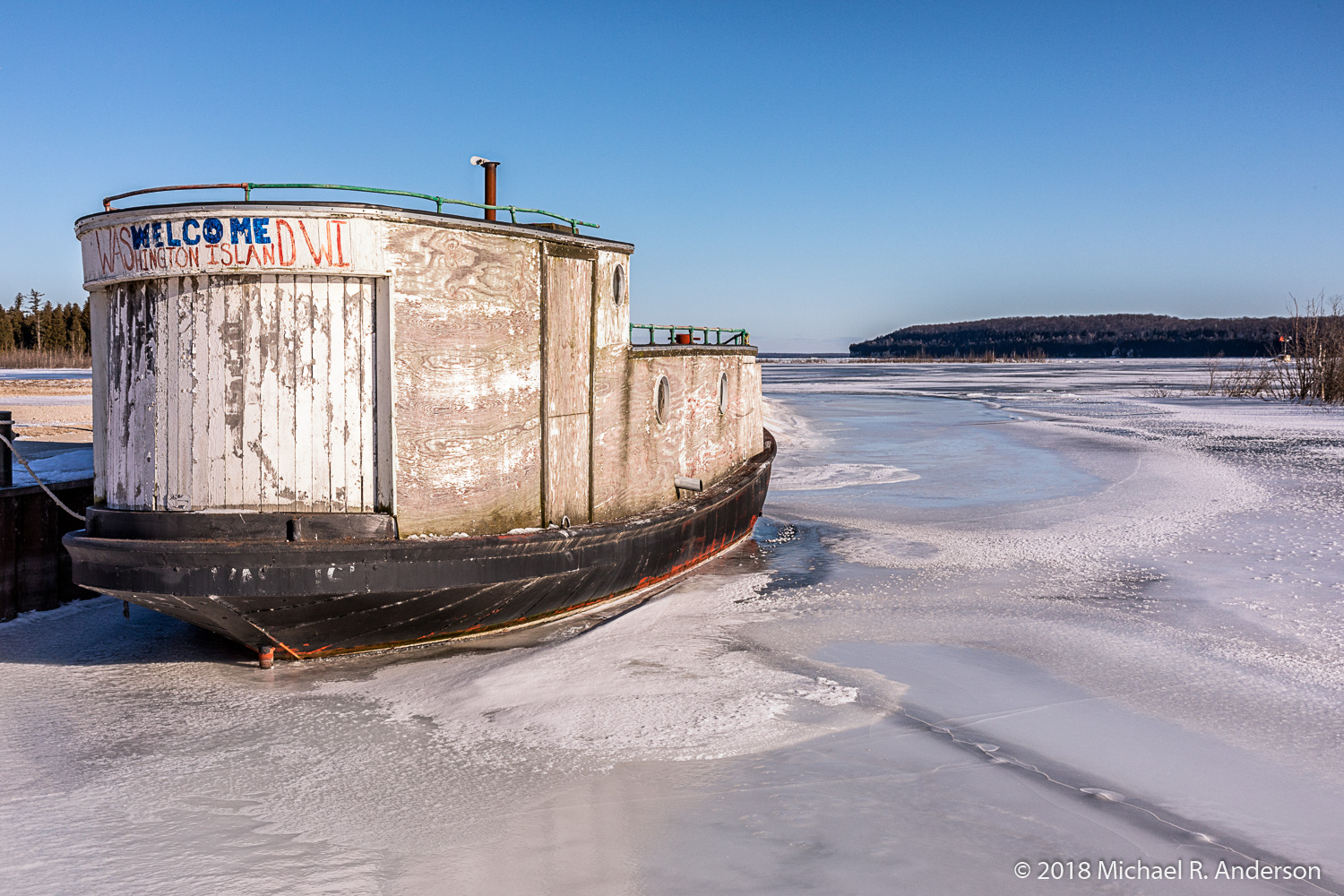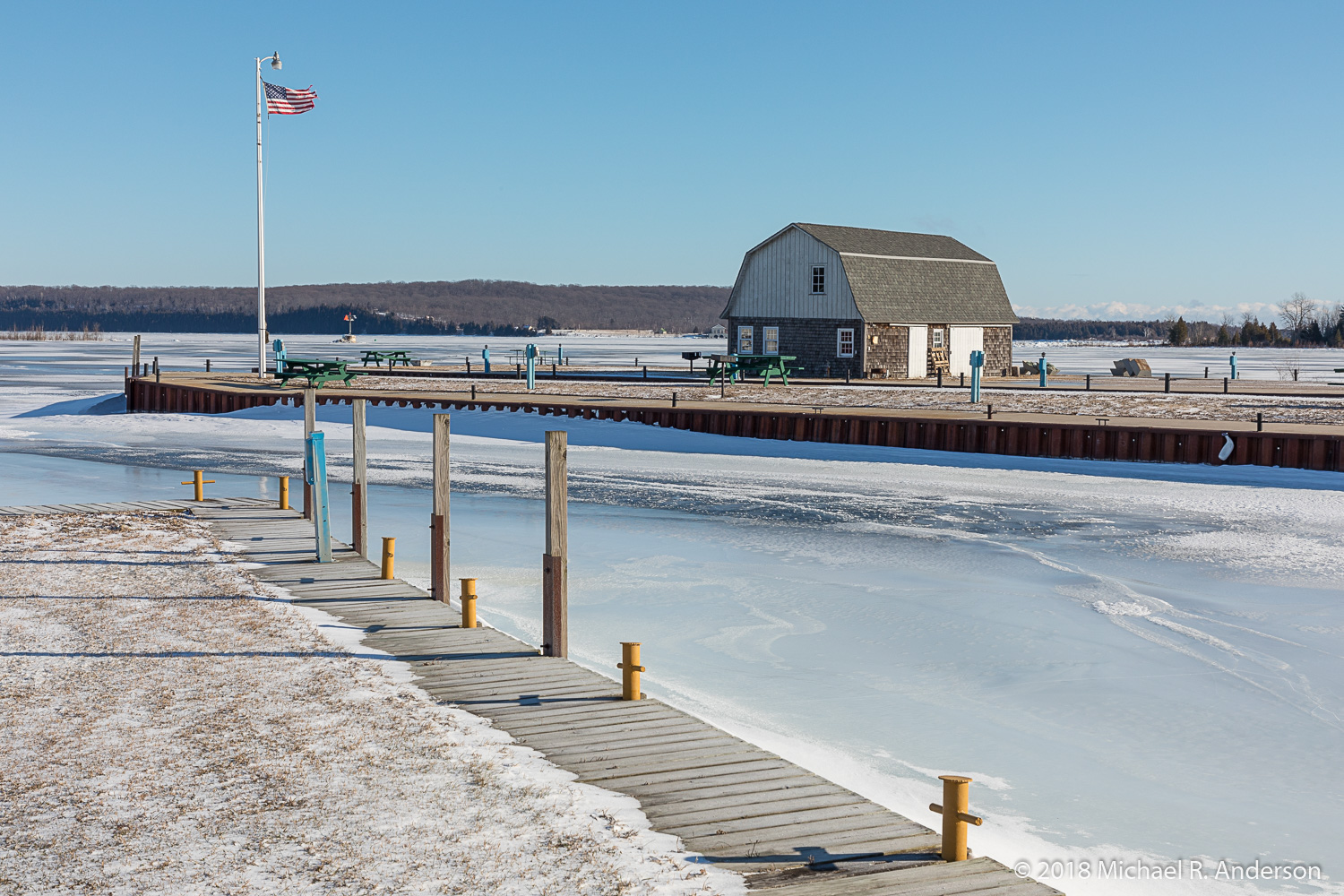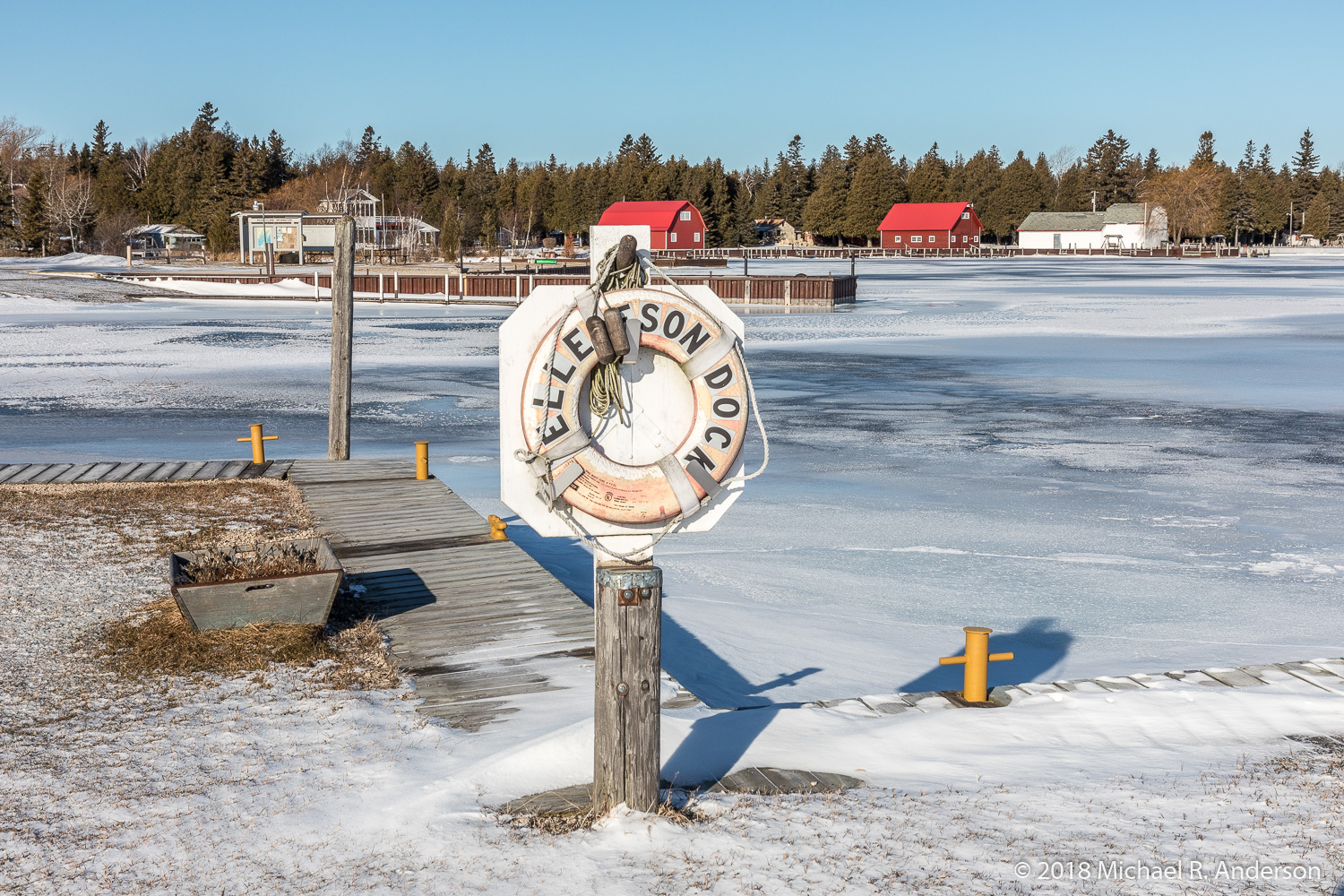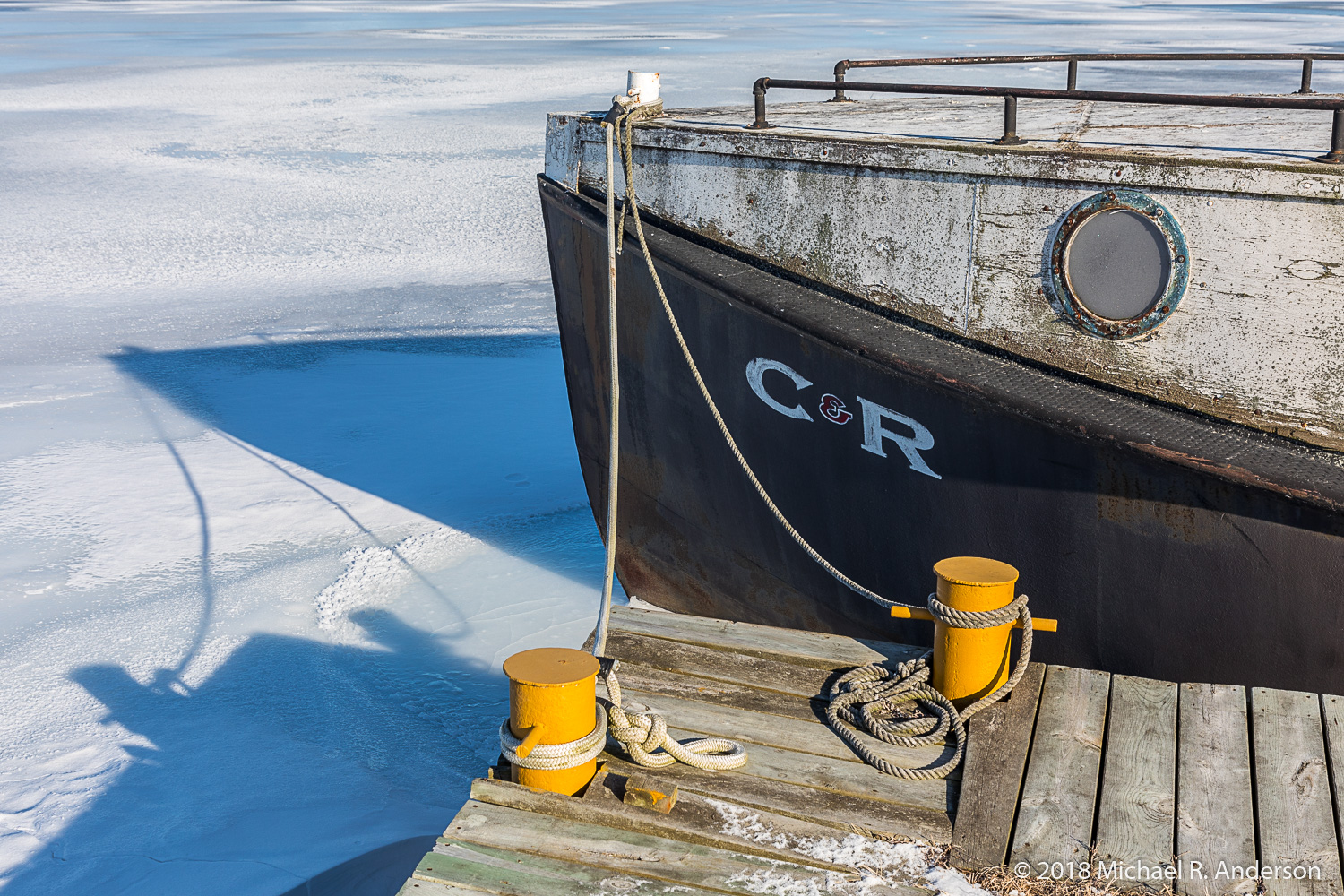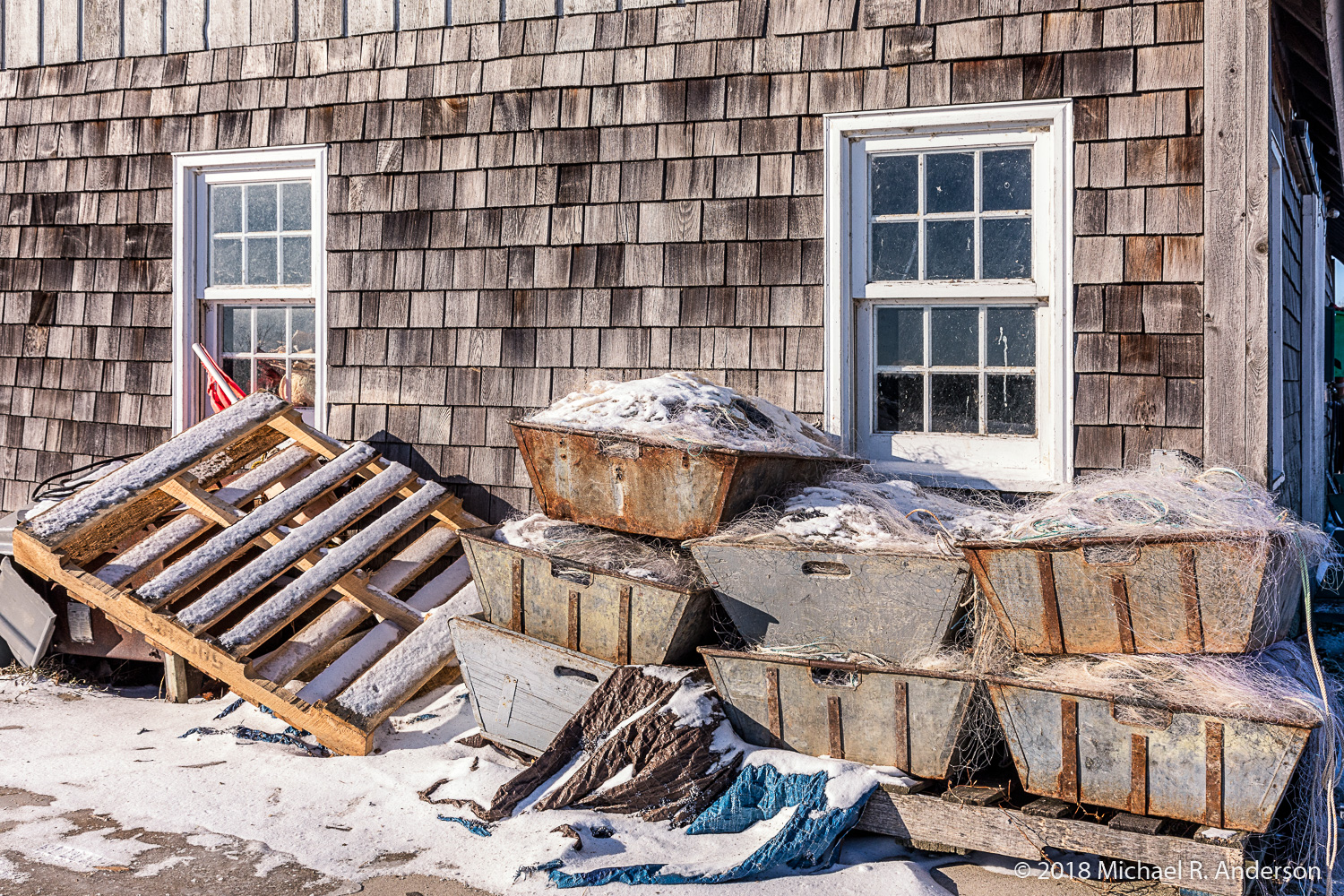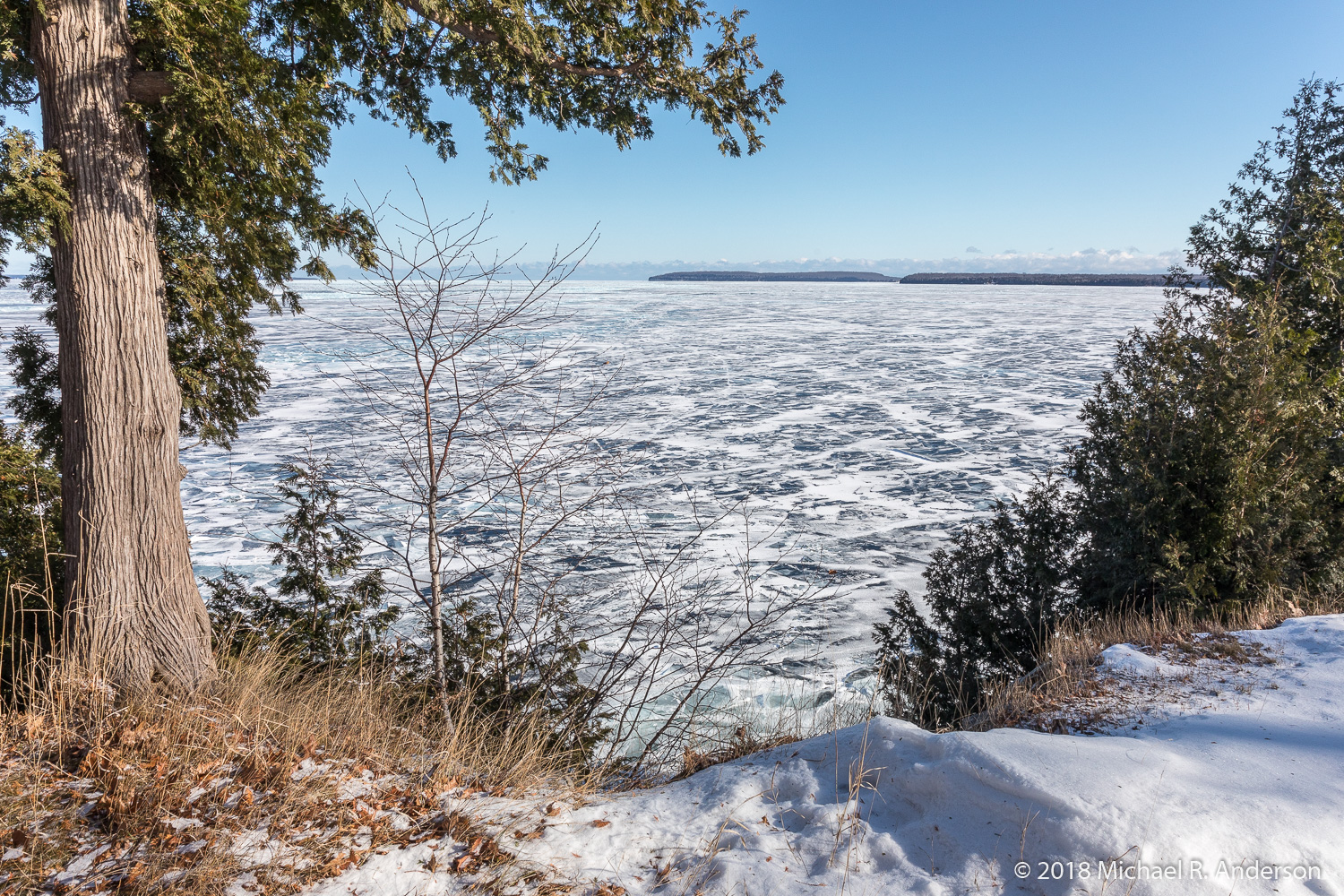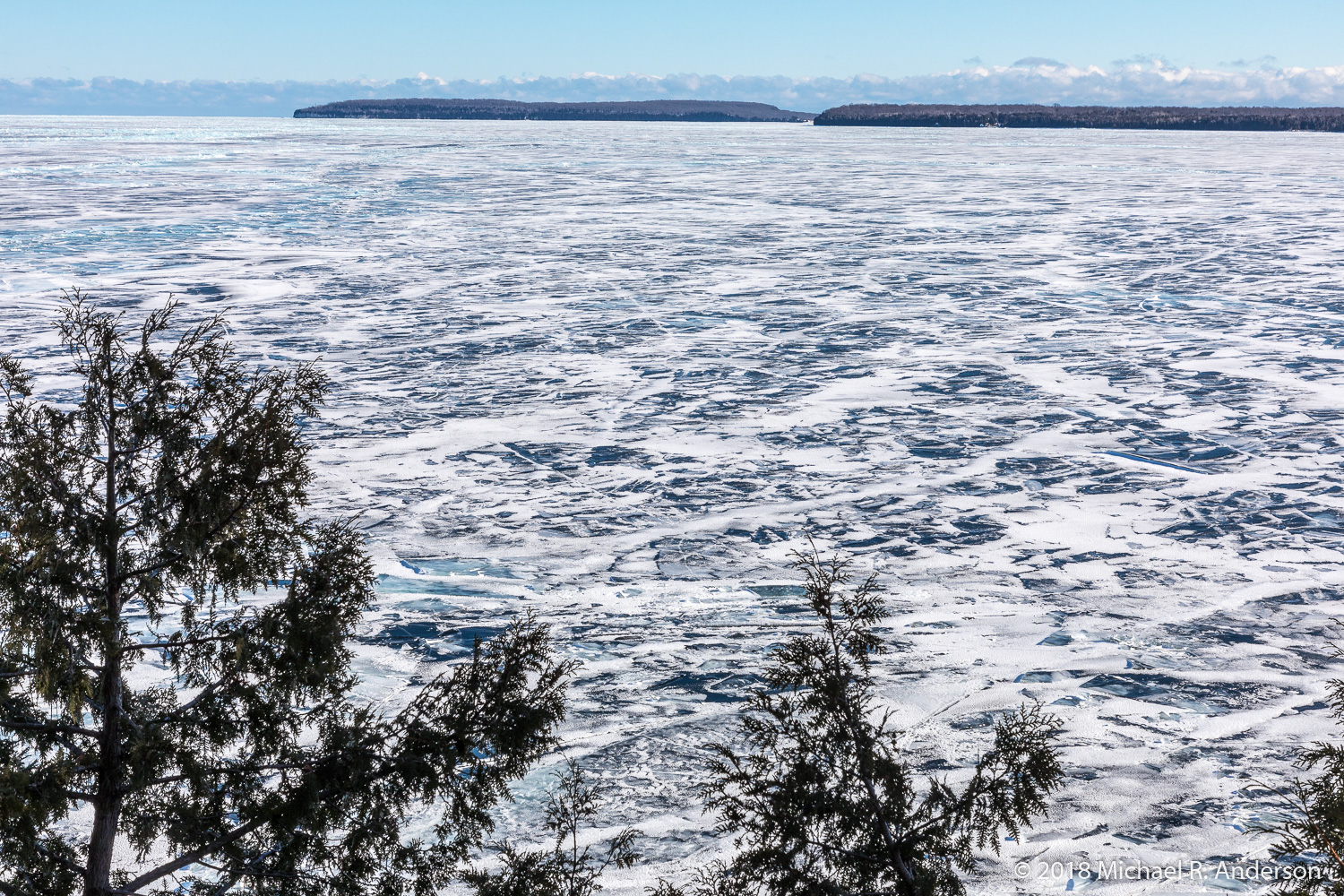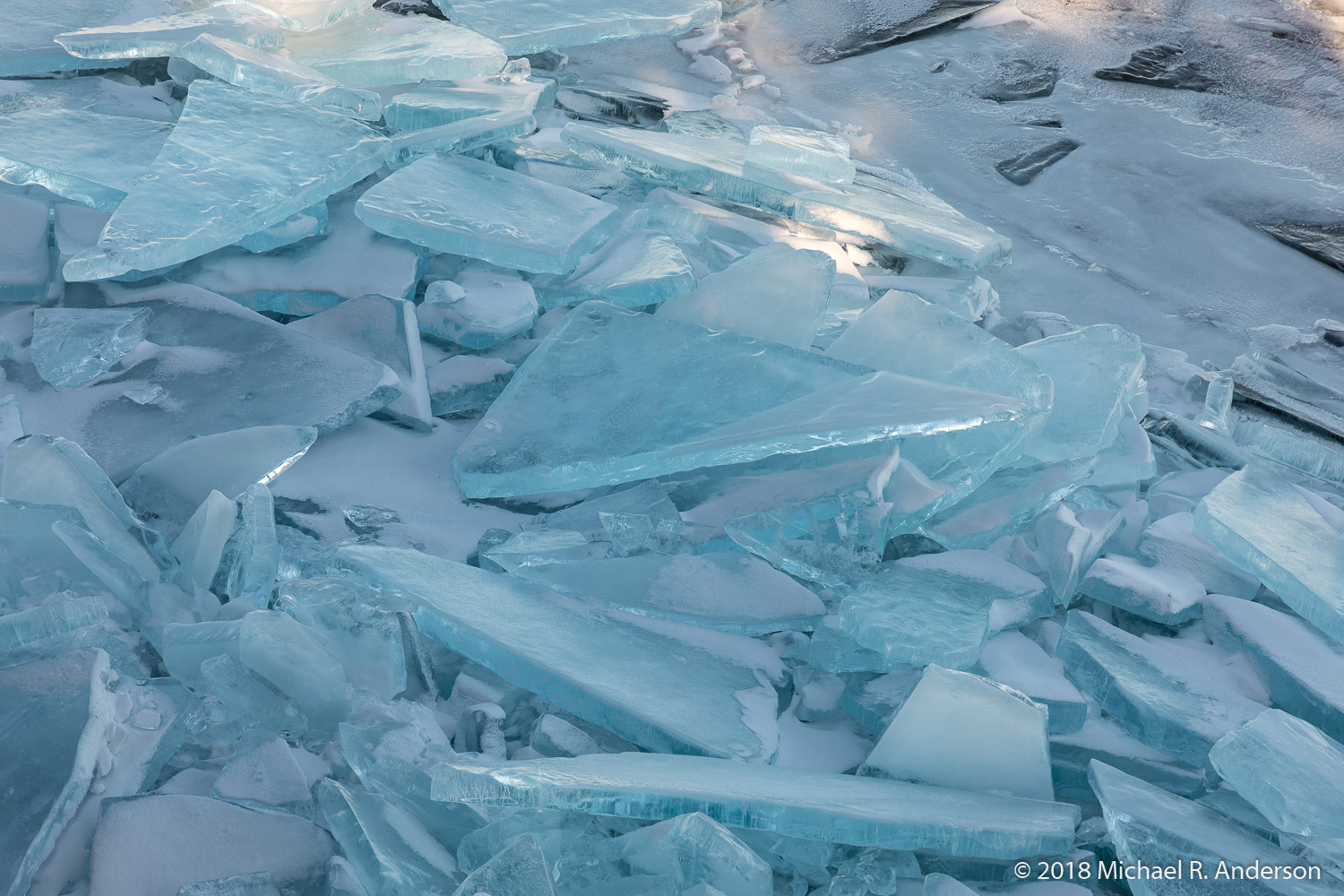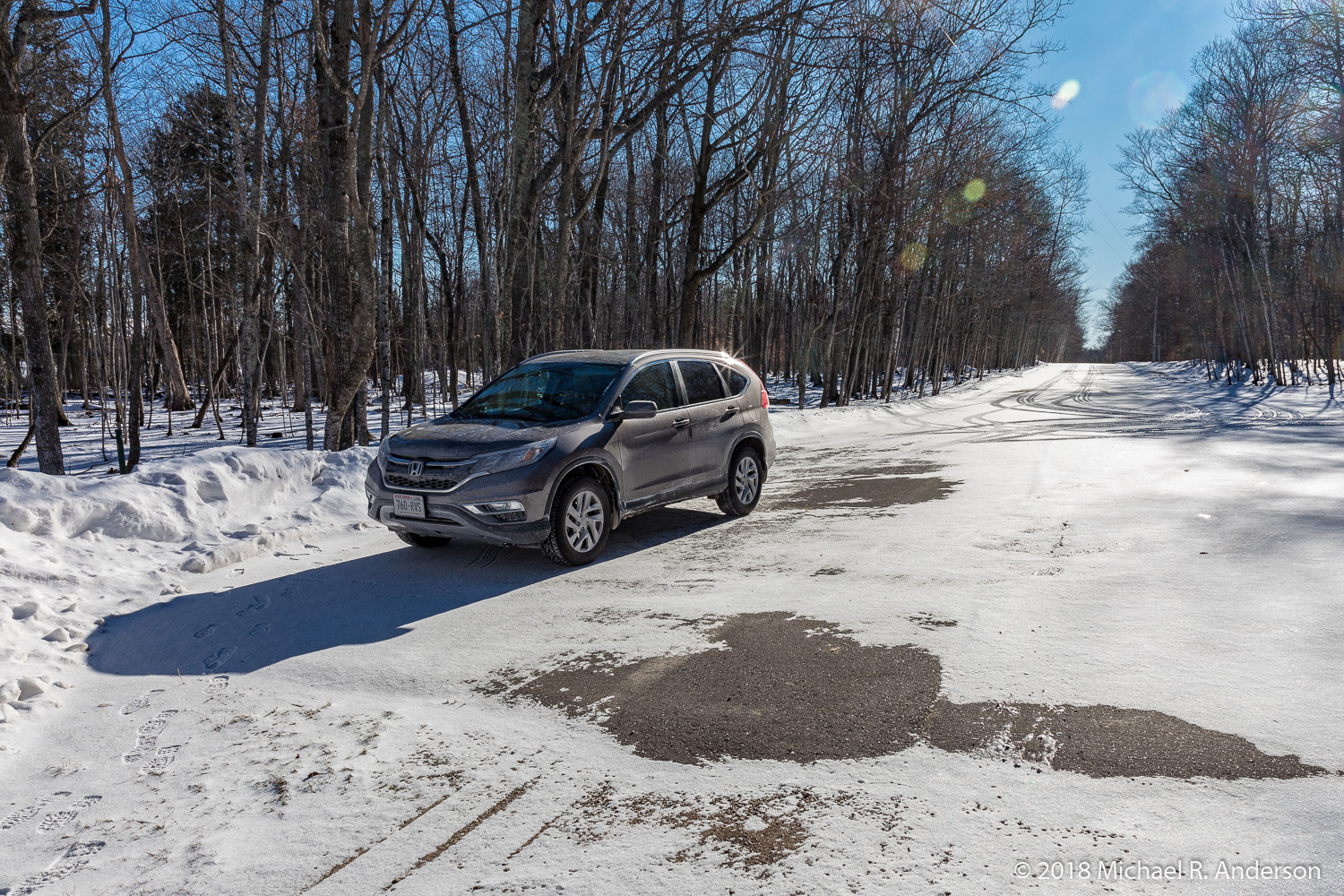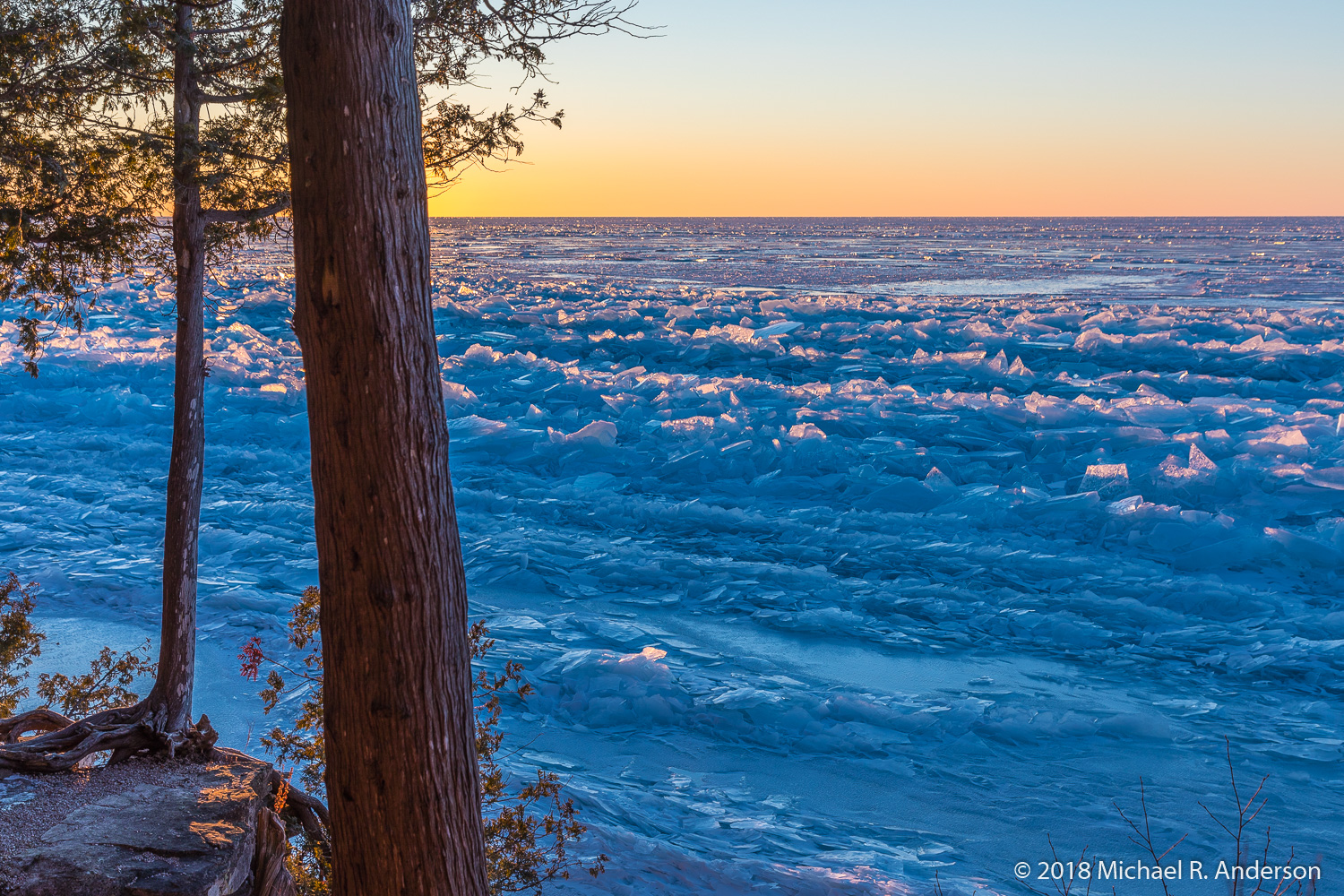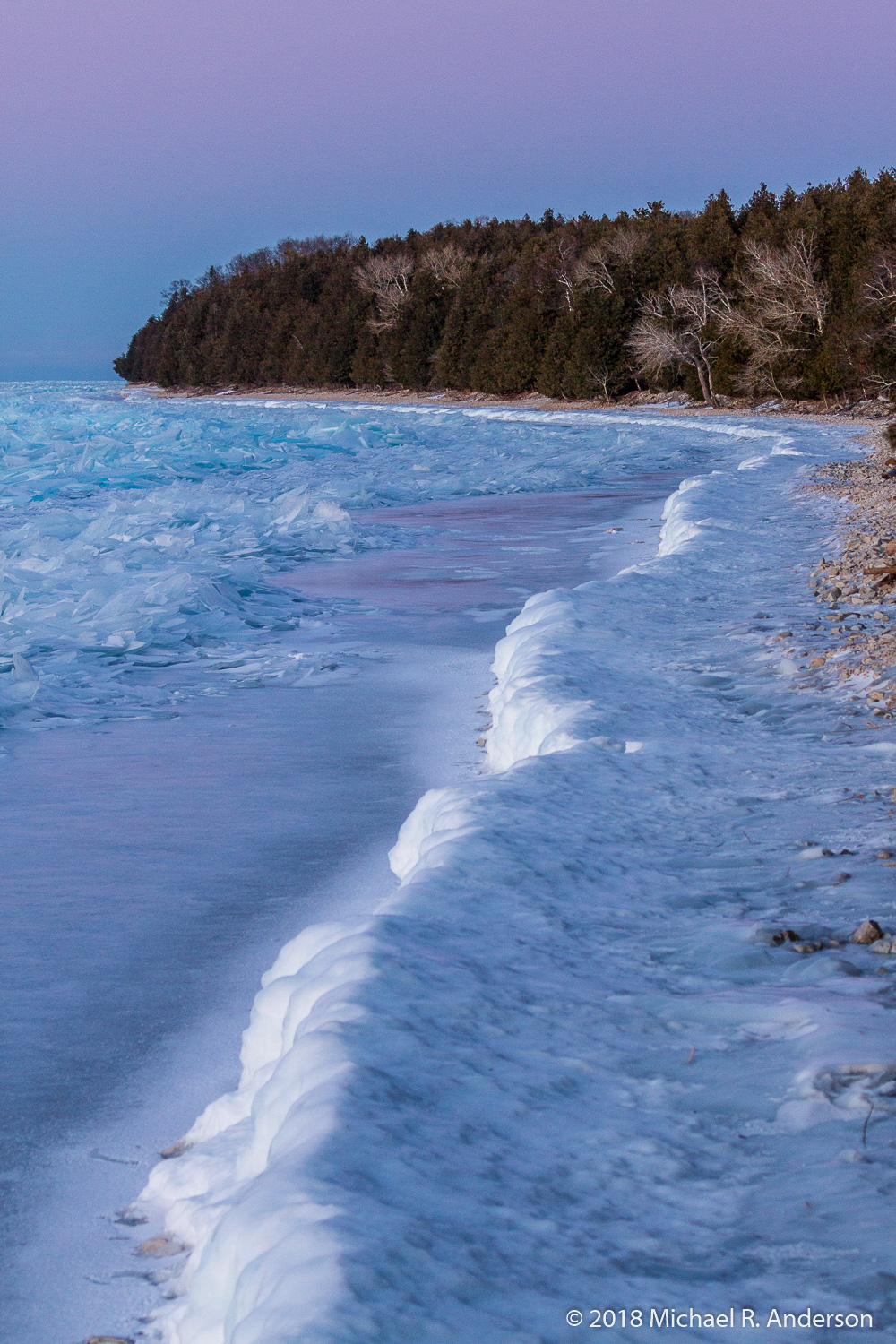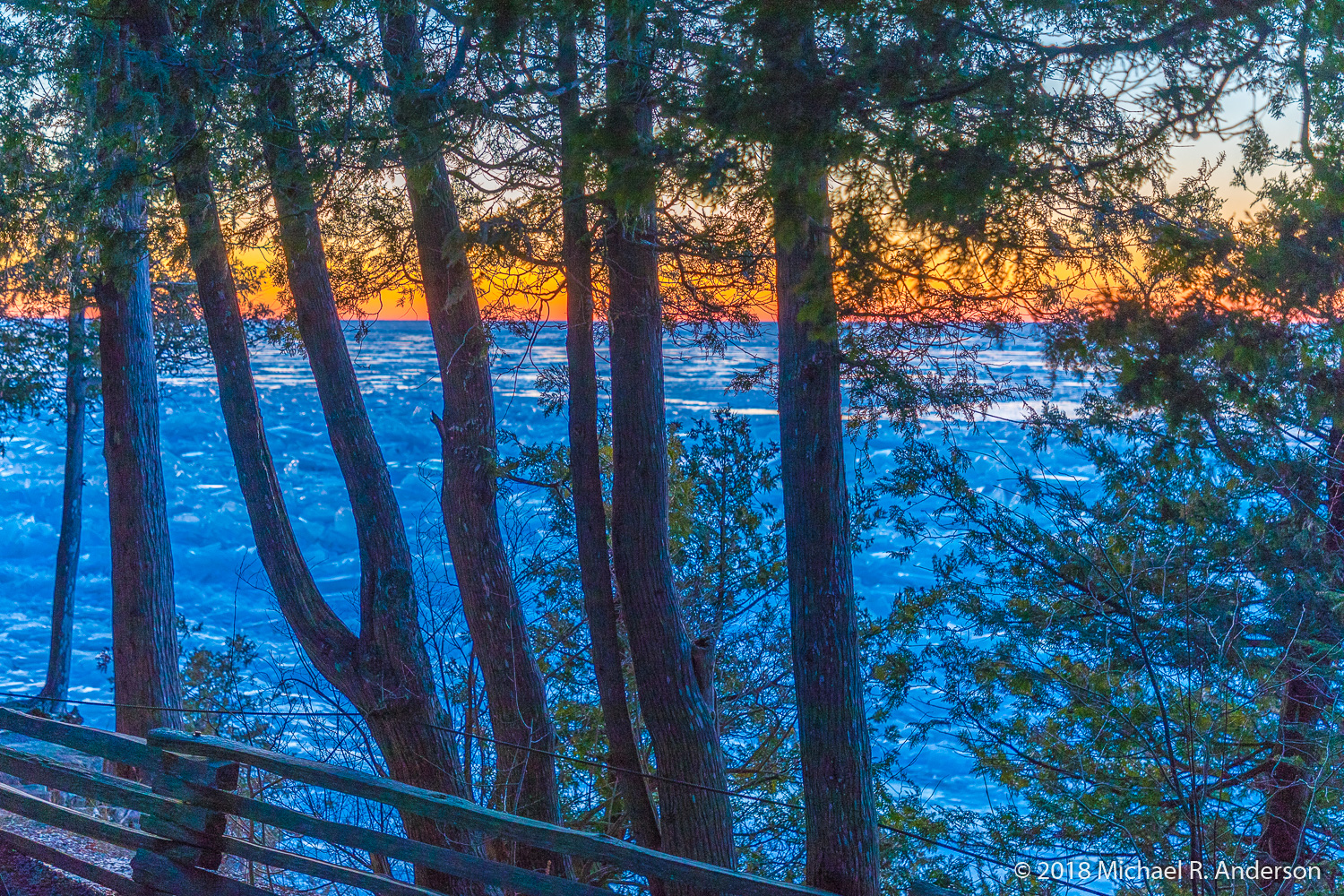There aren’t many places to stay on Washington Island in the winter. Fortunately, Findlay’s Holiday Inn is open all year. Better yet, in the winter their restaurant is open for breakfast and dinner on Friday, Saturday, and Sunday. So, we left the ferry dock behind and headed down the road. There wasn’t much snow on the ground, but enough to paint a nice winter scene. The sky was clear and the sun was getting low by the time we checked into our room. We were the only guests in the inn that weekend.
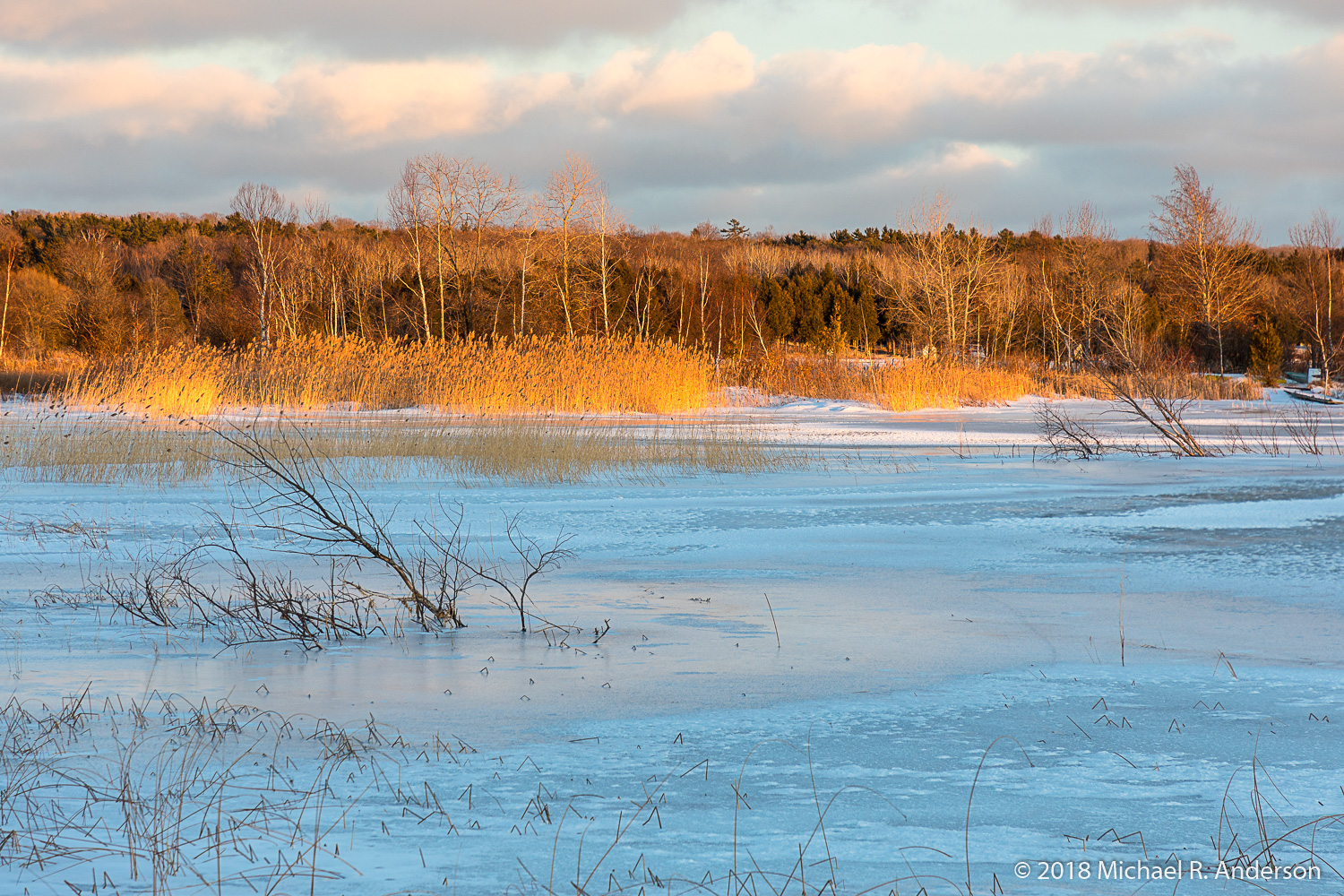
We had some time before dinner so we walked down to Detroit Harbor behind the inn. The sun was approaching the horizon and cast an autumn-like hue on the grasses and trees along the shoreline. It was single-digit cold but calm, so we enjoyed our short outing before returning to the lodge in time for dinner. If you’re from the Midwest you can probably guess what they served for their Friday night dinner. That’s right — a fish fry. It was all you can eat and the price included delicious cherry pie ala mode baked by Mrs. Findlay herself. Mr. Findlay manned the kitchen. Though we were the only guests staying at the inn, we were joined by a dozen or more local folks for dinner. Having had nothing but a cold ham sandwich and energy bars since breakfast, this was an excellent and much appreciated meal.
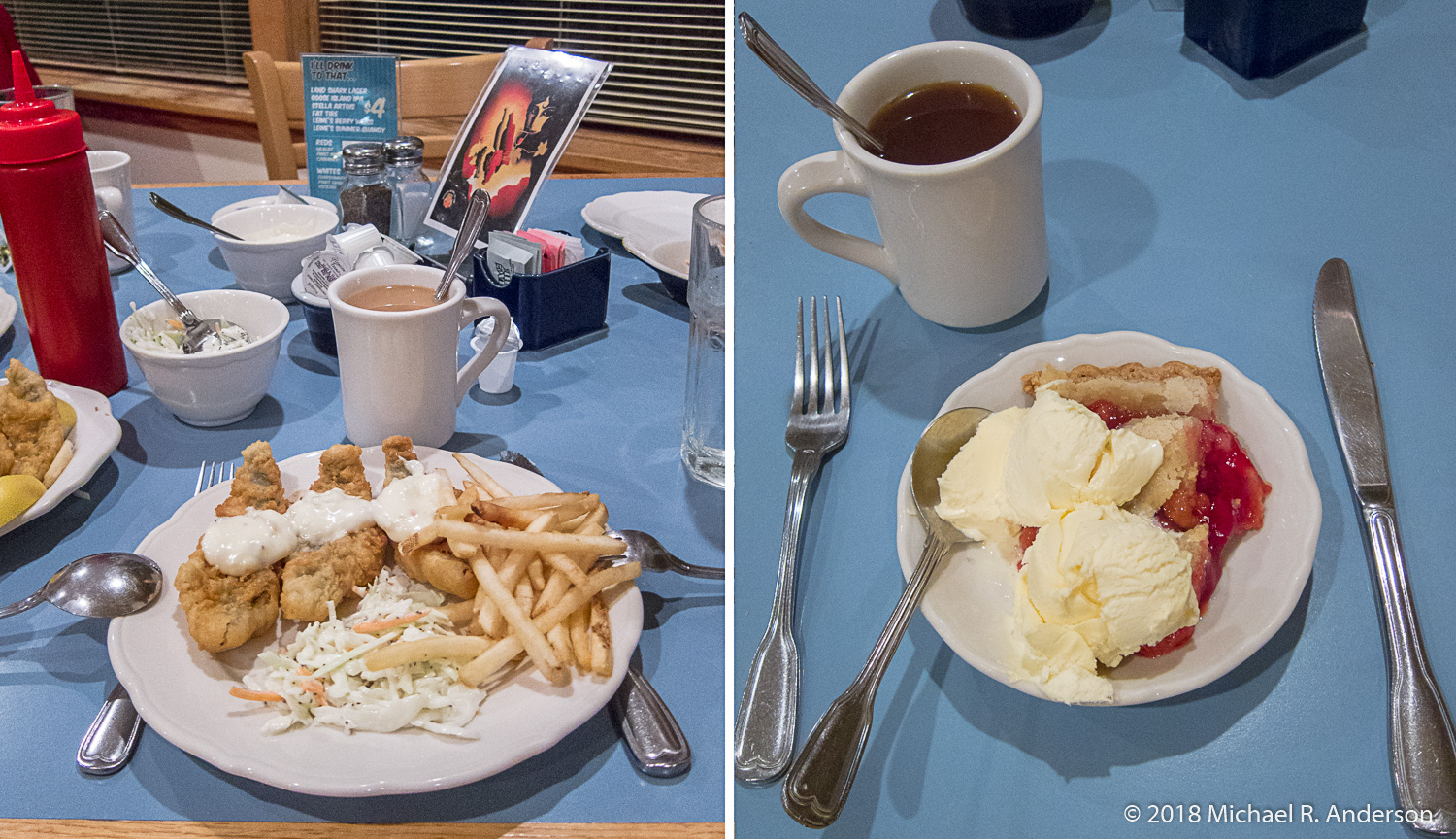
On Saturday morning we awoke to bright sunshine and clear blue skies. After breakfast I donned heavier layers than I had worn the day before. For taking photos I didn’t want to have to change lenses while walking around in the snow, so I put a 24-105 mm f/4 on one camera body and a 70-200 mm f/4 on a second camera body. With the car’s outside thermometer reading 4 degrees, we headed off to tour the island and see the winter version of some of our familiar summer haunts.
The driveway providing winter access to Detroit Harbor was open, so we stopped there to see if there was much ice fishing activity. Trucks and shanties were visible but, if there were people fishing, they were all smart enough to be sitting in their shanties — heated shanties, I hope. The driveway to Little Mountain had not been plowed but there was not much snow so we didn’t have trouble driving in. Climbing the stairs up the hill and then climbing the stairs to the top of the observation tower offered a good cardio workout. Schoolhouse Beach was vacant when we arrived but a few other hardy visitors eventually showed up. The rocks on the beach were pushed up into two parallel rows. The result of winter storms maybe?
Jackson Harbor, about as far away from the inn as you can get on this tiny island, was empty as well. Except for two fishing boats, the “Welcome,” which is permanently tied up at the Maritime Museum, and the “C & R,” the harbor was frozen and empty. Large wooden containers of fish nets were piled alongside one of the boat houses but there were no obvious signs of activity. Rock Island, usually visible as a lush green landscape floating between a light blue sky and a dark blue lake, sat dark and almost devoid of color across the harbor. A slight breeze playing with some grass along the shore was the only movement.
After a lunch stop at The Island Cafe and Bread Company, we headed out again. The ice at all of our previous stops had been flat and, for the most part, unbroken. We were determined to find piles of broken ice — “shove ice” as the ferry operator called it — stacked up along the shore. We decided to drive north on Main Road until we finally reached its dead end on Boyer’s Bluff. A house was located at the end of the road, but there was a marked trail on the east side of the road. The trail was quite short, about 100 yards, so it only took a few minutes for us to reach the top of a limestone cliff. From there we could see the eastern shore of Washington Harbor. Beyond that we could see Rock Island. The ice sheet covering the lake looked like a million broken pieces that had frozen together into an icy mosaic. Looking down at the base of the cliff, we could finally see some small piles of shove ice. We could not, however, find a way down to the shore.
Heading back down Main Road, we turned off on Little Lake Road to cross over to the west side of Boyer’s Bluff. After a brief stop at Little Lake, we turned back and drove down Little Lake Road until we saw the sign for People’s Park. We remembered that there was a good view of the lake from the park so we hiked to the western edge of the bluff. Finally, as far as we could see to the north and to the south, it looked like a huge wave of broken ice had frozen in place before it could crash onto the shore. The setting sun painted the western sky orange, complementing the icy blue color of the lake. As the color faded and the temperature dropped, we finally headed back to the inn.
